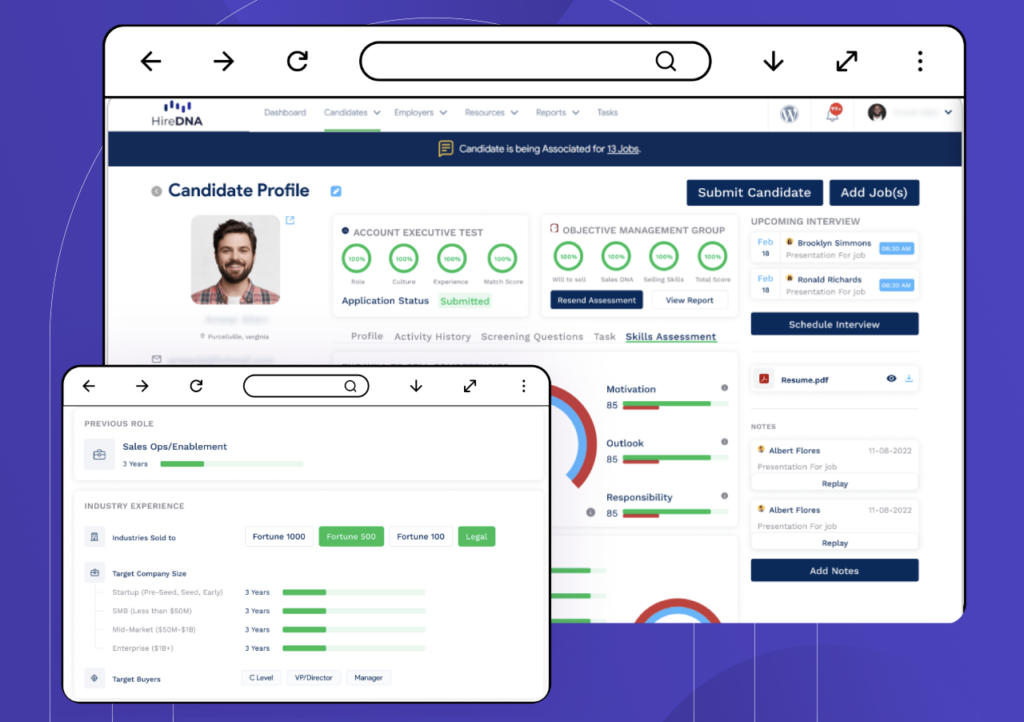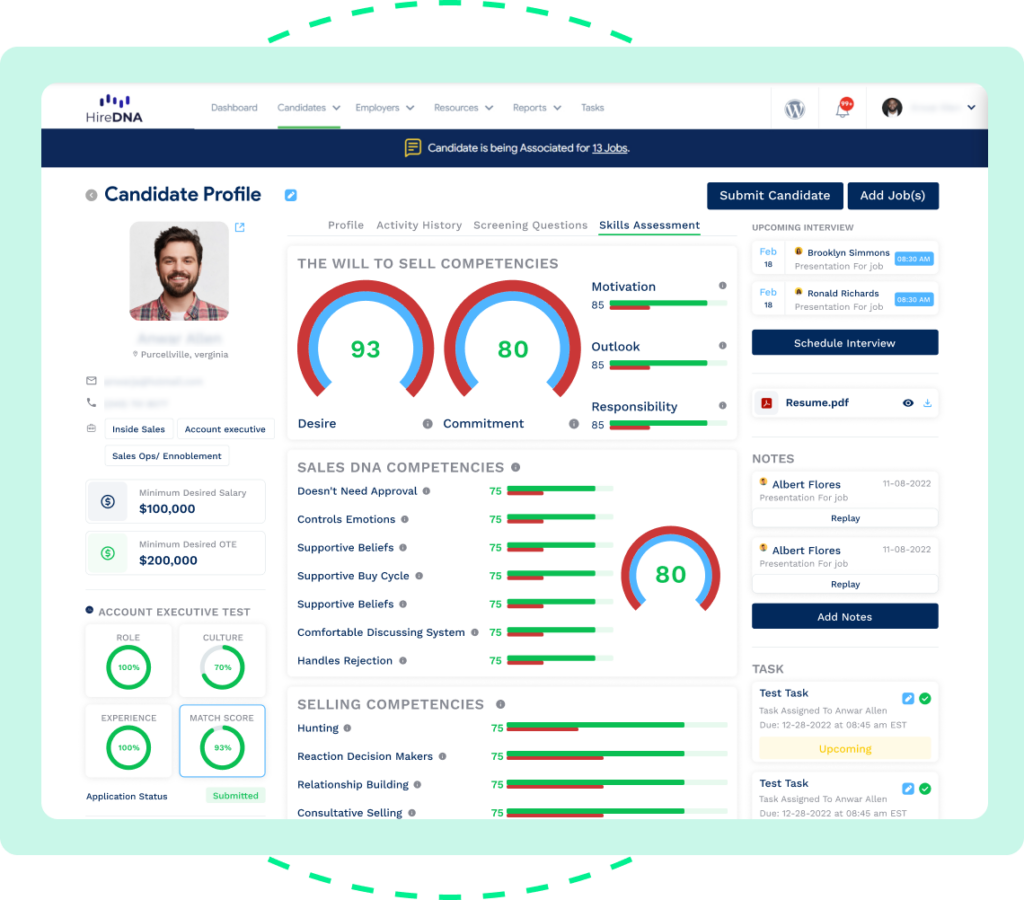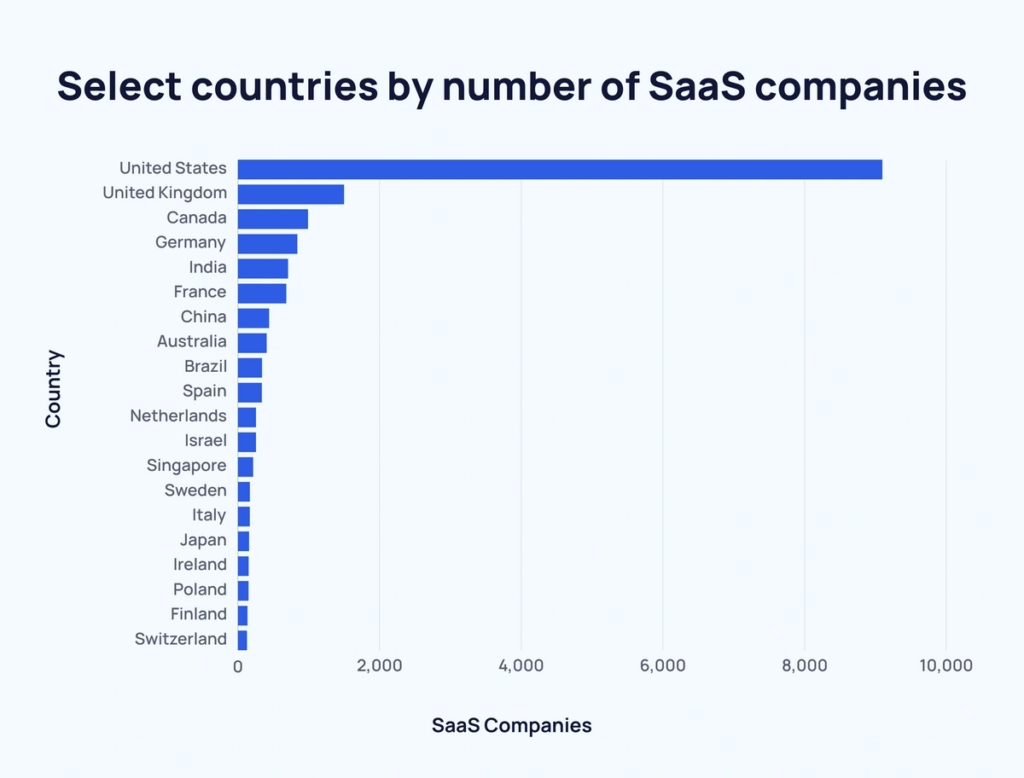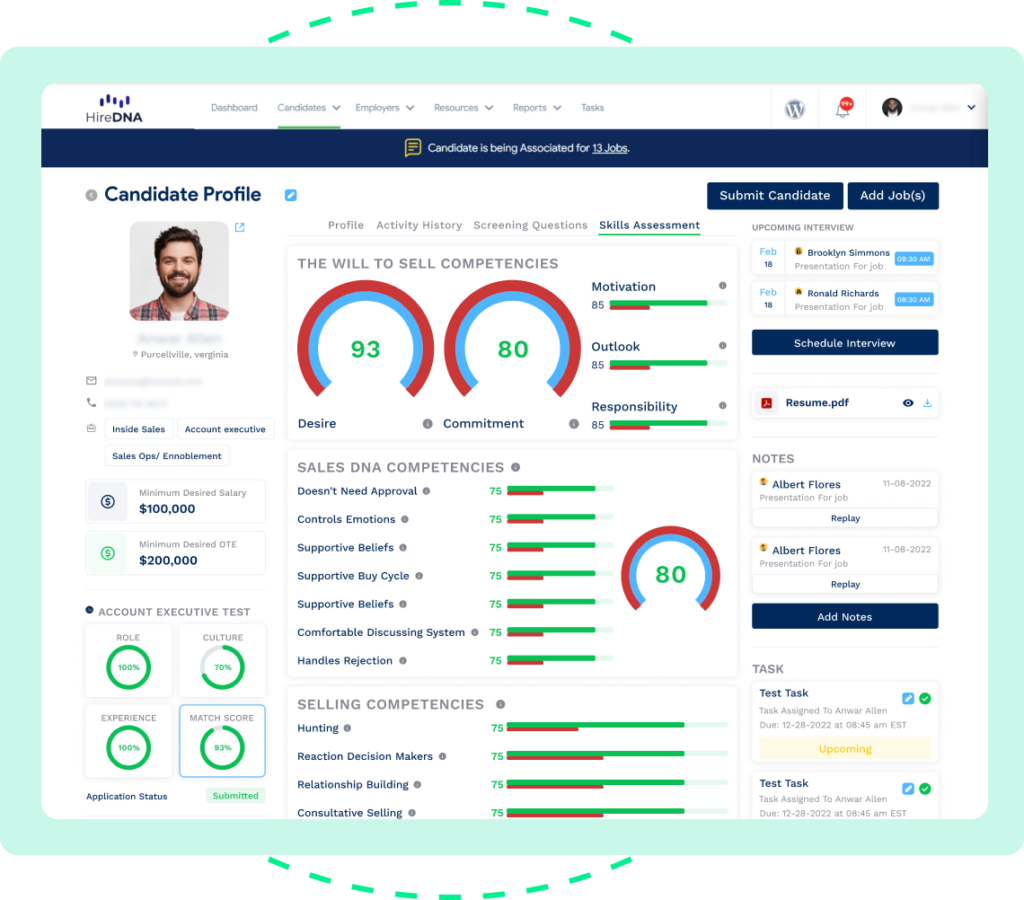Turnover is an issue for many industries. But it’s especially problematic in SaaS sales. According to research, the average turnover rate of US salespeople is around 30%, which is more than double the 13% of all other professions. Based on these numbers, one out of every three salespeople you hire will quit each year. And if left unchecked, this can be disastrous to your SaaS growth.
For this post, I’ll examine the impact high sales turnover can have on your SaaS company and common sense ways to stop it.
Sky High Recruiting Costs
Hiring salespeople isn’t cheap. While the costs can widely vary, experts say that it can easily cost $7,000 to $8,000 per rep. If this happens at scale, it can quickly result in exorbitant recruiting costs that can eat away at your bottom line.
Because of this added expense and the constant strain on resources, profitability can take a big hit. And if you’re constantly hiring and rehiring, you’re basically running on a hamster wheel, making it hard to achieve any real progress.
Loss of Expertise
Seldom can an elite salesperson be easily replaced. Because they possess a unique knowledge and skillset and have an in-depth understanding of your existing customers, you can’t just grab somebody off the street and expect them to operate at the same level.
Even if you find another superstar sales rep, it still takes time to get them up to speed with how your company operates, learn your products, build rapport with customers, and so on. As a result, sales turnover can be detrimental to your sales process and make it difficult to close deals like you would if retain top talent.
Customer Experience Disruptions
Try to put yourself in an existing customer’s shoes for a second. Their primary point of contact has left your company, and all of a sudden, they have to deal with a new rep who’s just learning the ropes. This is almost guaranteed to disrupt the customer experience and could potentially sour the relationship.
At best, it can create frustration with an existing customer. At worst, it may compel them to seek out a competitor.
And for a potential customer who’s interacting with a new rep rather than an established one, it’s hard to provide the same level of experience simply because a new rep doesn’t know the ins and outs. So from a customer experience standpoint, high sales turnover can be toxic.
Sluggish Sales Cycle
Whenever there’s a constant stream of new reps getting their bearings and learning your product and market, it’s likely to slow down the sales cycle. And that can be a big problem given that the SaaS industry has a notoriously long sales cycle — and getting longer all the time.
“The SaaS sales process has grown more complex,” explains Channel as a Service. “Now, the average B2B buying cycle is 43 days, up from 33 days in 2020. For big businesses, this can go up to 65 days, hurting revenue and growth.”
If you continually have to replace salespeople, it can result in a sluggish sales cycle, which can slow down revenue generation and impede growth.
How to Drastically Reduce Sales Turnover and Fuel SaaS Growth
The bottom line is that turnover is more than simply an inconvenience. Not to be melodramatic, but it’s an issue that can have far-reaching consequences and erode a SaaS company from the ground up. But what can you do about it?
It should probably go without saying, but first, make sure you’re offering a competitive salary and benefits, as this is a precursor to anything else. Even if you check all of the other employee retention boxes, you’re going to struggle if you can’t pay top talent what they’re worth.
As for specific numbers, our research found that, as of 2023, the average SaaS salesperson’s salary was just under $100k at $99,826. We wrote a comprehensive article on this topic that breaks this down in detail, which you can find here.
As long as you’re close to this number, you should be in pretty good shape.
Next, I recommend optimizing your SaaS sales hiring process. In particular, take steps to ensure you find the best of the best candidates who not only meet your qualifications but who are a natural fit your for company culture.
For example, it’s smart to use sales recruiting solutions with in-depth, science-based assessments to quantify a candidate’s capabilities.
This takes the guesswork out of the process, and you can easily compare SaaS sales candidates side-by-side and identify the cream of the crop before moving on to the next round of hiring. Not only does help you find the true superstars, it saves a lot of time.
Third, create a 90-day game plan for onboarding new sales reps to get them up to speed and equip them for success. This could include offering new hires a welcome package, offering structured, phased onboarding, setting concrete goals, and measuring success along the way.
Here’s an illustration of what that might look like.
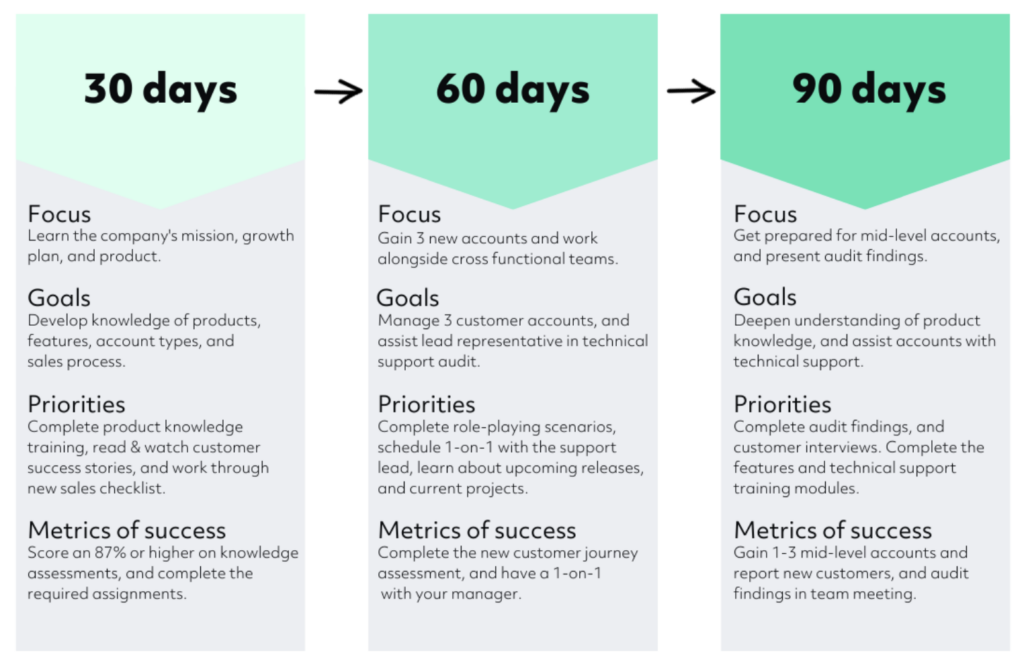
Note that we wrote an entire blog post about creating a 90-day blueprint to maximize retention, which you can read here.
Fourth, make sure that you prioritize ongoing salesperson development and promotion from within. Feeling like someone is stuck in a dead-end sales job with no room for growth is a surefire way to send reps packing.
But if they’re given a chance to continually develop their skill set and climb the ranks, the odds of them sticking around for the long haul increase considerably.
Lastly, get in the habit of not only accepting sales rep feedback but encouraging it. More often than not, being on the lookout for ways you can improve can help you address small issues before they escalate. Not to mention, reps who feel listened to and their opinion valued are far more likely to be satisfied in their jobs.
Retaining Sales Talent: The Key to SaaS Growth
We all know that high sales turnover is harmful. But not everyone understands the full implications. With SaaS sales having a higher-than-average turnover rate, this is something to tackle head-on.
If you’re ready to level up your sales recruiting, try our Hiring Readiness Assessment. It can help you find ultra-qualified candidates, reduce hiring mistakes, and fill positions faster.

